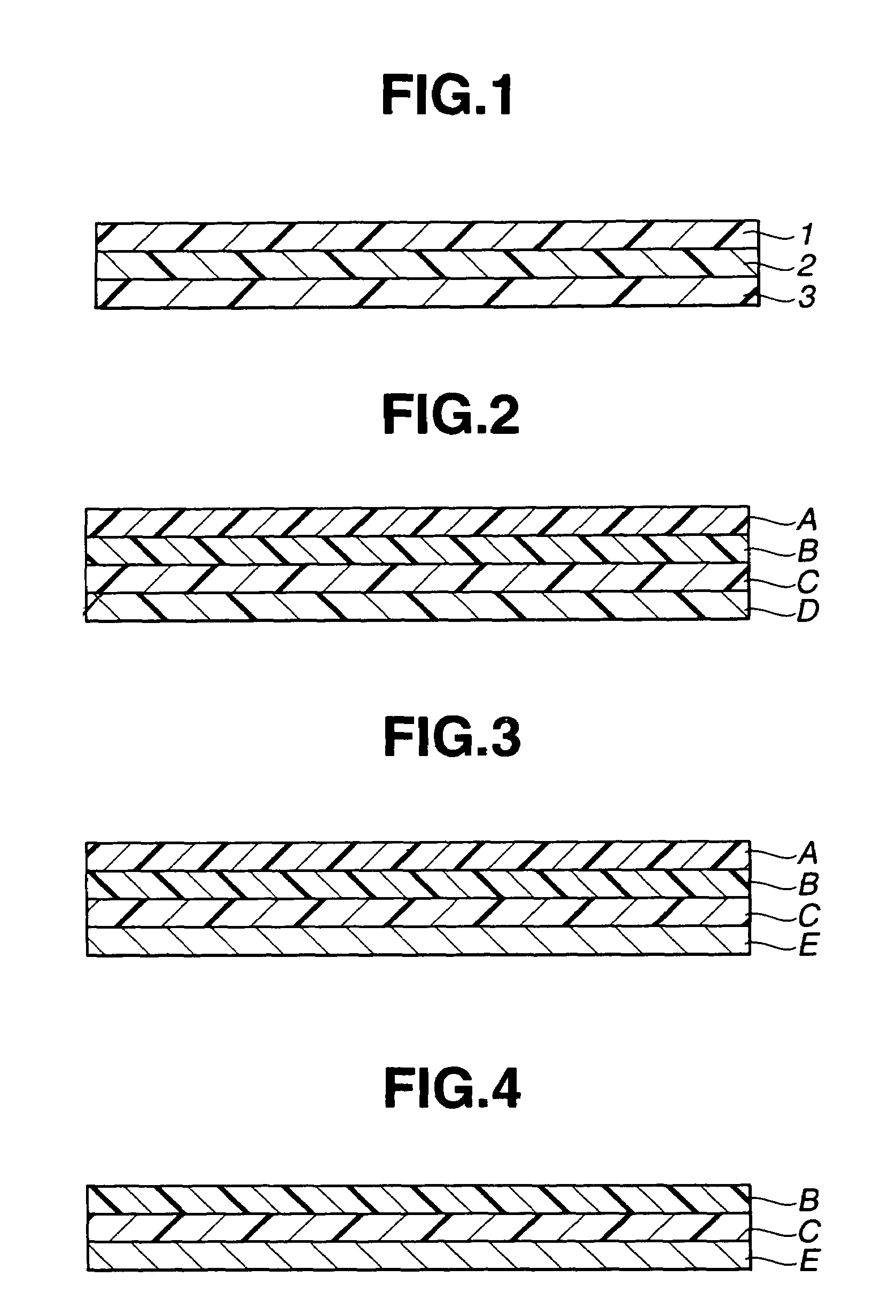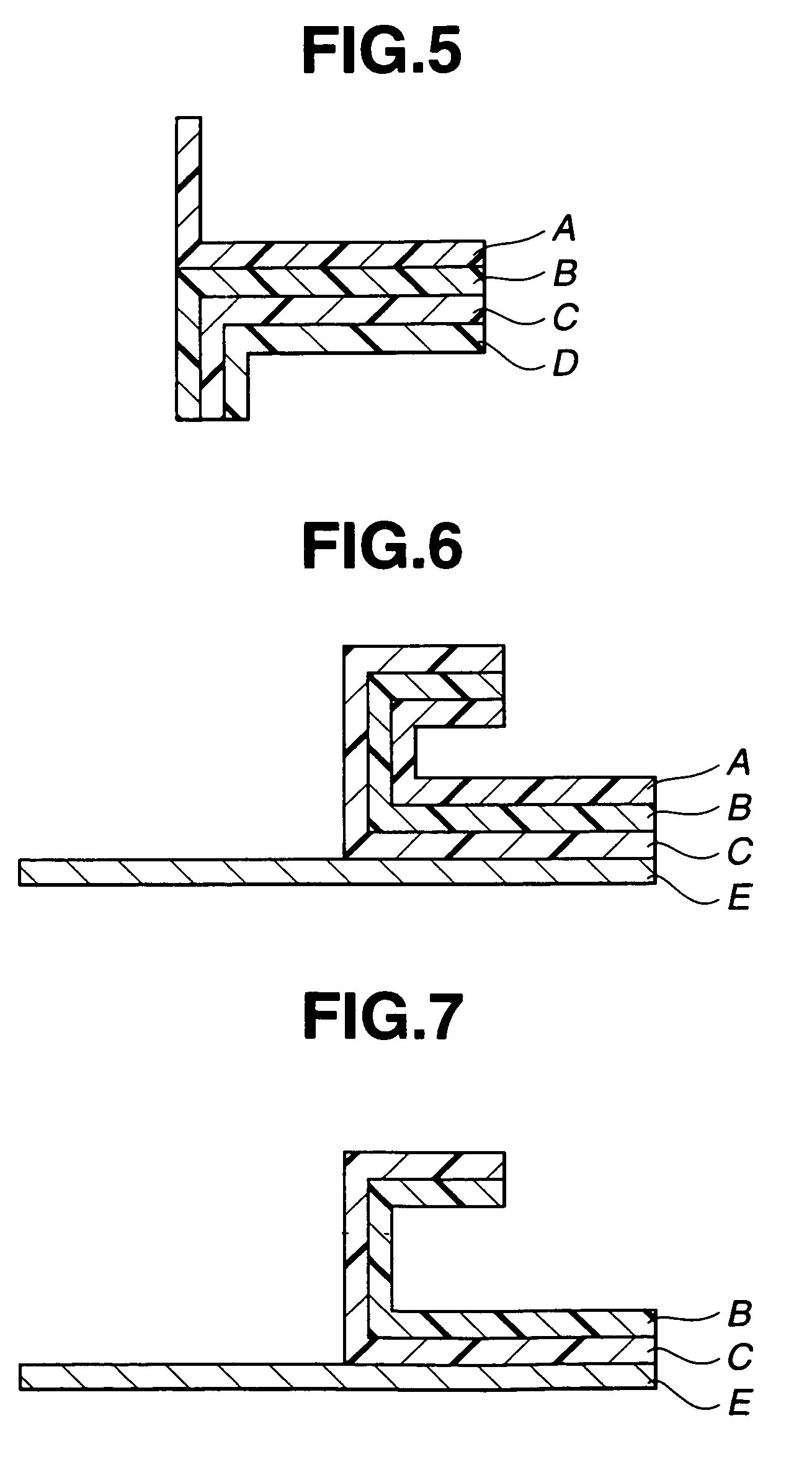Method for the surface treatment of a fluorine resin, method for making a laminate, and a laminate
a fluorine resin and surface treatment technology, applied in the field of laminates, can solve the problems of poor bonding properties of the elastic adhesive body formulated with a silane coupling agent, disadvantageous crosslinking elastic adhesive body, and unsatisfactory surface treatment of the fluorine resin. achieve excellent initial bonding properties and storage stability
- Summary
- Abstract
- Description
- Claims
- Application Information
AI Technical Summary
Benefits of technology
Problems solved by technology
Method used
Image
Examples
experimental examples 1 , 2
Experimental Examples 1, 2
[0153]The property of bonding between a corona discharged fluorine resin and a crosslinked elastic adhesive body directly laminated thereon was tested in the following manner.
[0154]Crosslinking elastic adhesive body compositions B, C as used in Example 9 were, respectively, used and formulated with a silane coupling agent as shown in Table 4, followed by lamination on the corona discharged fluorine resin in the same manner as in the example to obtain laminates each having a double-layered structure including one fluorine resin layer and one crosslinking elastic adhesive body layer.
[0155]The resultant laminates were each checked with respect to initial bonding force and bonding force after one month. The ratio of the bonding force after one month to the initial bonding force was calculated as storage stability. The ratio of 50% or over, which was considered to keep a good bonding force, was assessed as ◯, and the ratio less than 50%, which was considered to ...
PUM
| Property | Measurement | Unit |
|---|---|---|
| temperature | aaaaa | aaaaa |
| temperature | aaaaa | aaaaa |
| decomposition temperature | aaaaa | aaaaa |
Abstract
Description
Claims
Application Information
 Login to View More
Login to View More - R&D
- Intellectual Property
- Life Sciences
- Materials
- Tech Scout
- Unparalleled Data Quality
- Higher Quality Content
- 60% Fewer Hallucinations
Browse by: Latest US Patents, China's latest patents, Technical Efficacy Thesaurus, Application Domain, Technology Topic, Popular Technical Reports.
© 2025 PatSnap. All rights reserved.Legal|Privacy policy|Modern Slavery Act Transparency Statement|Sitemap|About US| Contact US: help@patsnap.com



